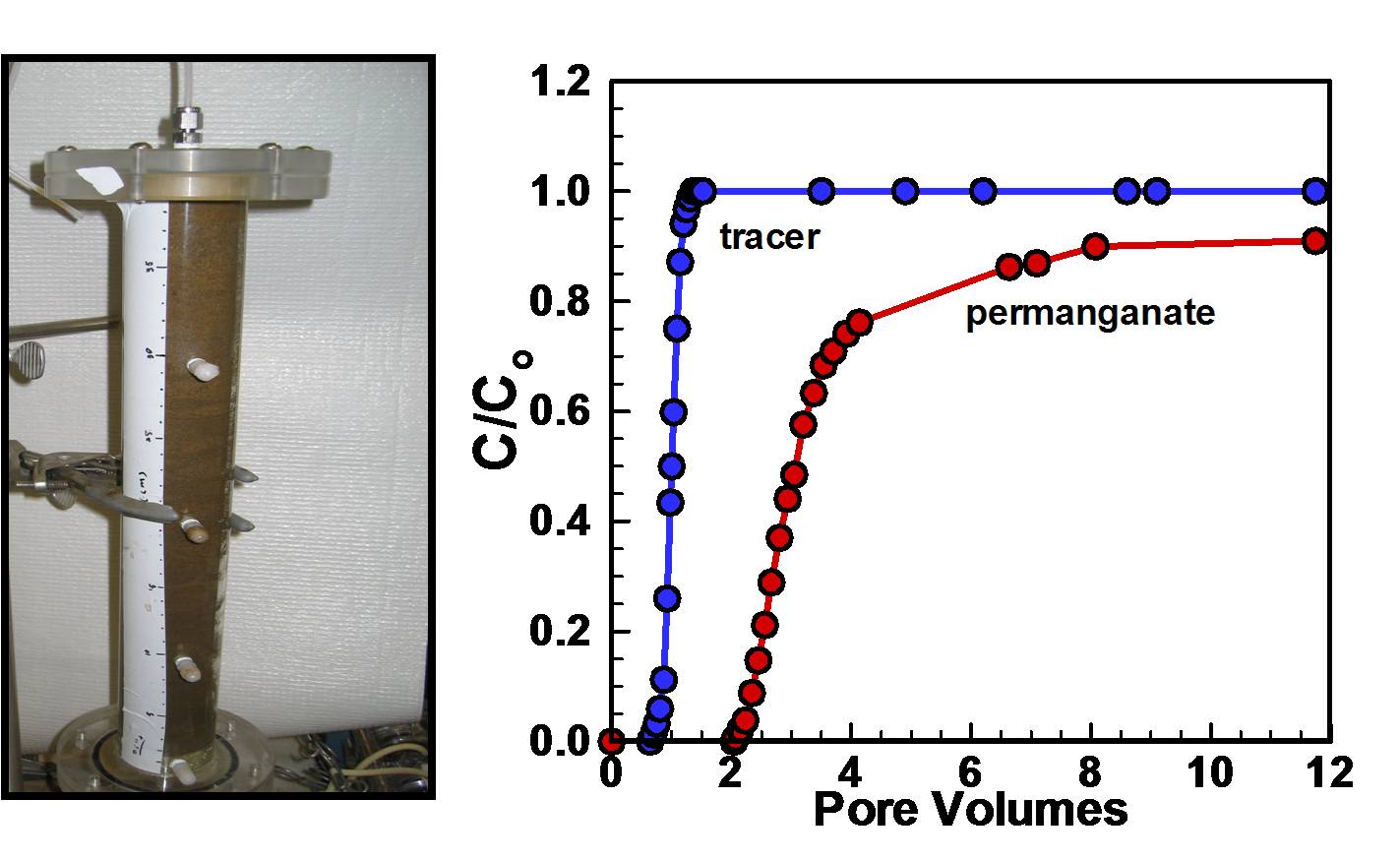Permanganate Natural Oxidant Demand
Knowledge of the consumption of permanganate by naturally occurring reduced species associated with aquifer materials is required for site screening and design purposes to support permanganate in situ chemical oxidation (ISCO) applications. It has been established that this consumption is not a singled-valued quantity but rather is kinetically controlled.
The reduced constituents commonly present in aquifer systems that may contribute to permanganate consumption are organic matter and reduced minerals containing Fe(II) (e.g., pyrite and siderite), Mn(II, III) (e.g., rhodocrosite and hausmannite), S(-I, -II) (e.g., pyrite and mackinawite) and other trace metals such as Cr(III). However, in general, only minerals containing Mn(II), Fe(II), and S(-I,-II), and organic matter are considered the predominant reductants present in aquifer materials.
The amount of permanganate required to satisfy the natural consumption of permanganate by aquifer material and to a lesser extent by dissolved groundwater constituents is referred to as the natural oxidant demand (NOD).

We have investigated permanganate NOD from a variety of perspectives. We developed a bench-scale or laboratory method based on a modification of the dichromate closed reflux COD method using permanganate which can be used to quickly and economically determine the maximum permanganate NOD for a given aquifer material.
We also investigated the critical factors controlling the short-term and long-term permanganate consumption kinetics at the bench scale. Experimental factors investigated include the initial permanganate concentration, the oxidant mass to solids ratio, and the type and concentration of reductants associated with the aquifer material. The entire NOD data set was used to enhance our understanding of NOD kinetic behavior, and to develop kinetic NOD models. This comprehensive NOD investigation of sands and silty-sands represents the first systematic analysis of this type where predictive kinetic models have been proposed using aquifer materials from multiple sites.